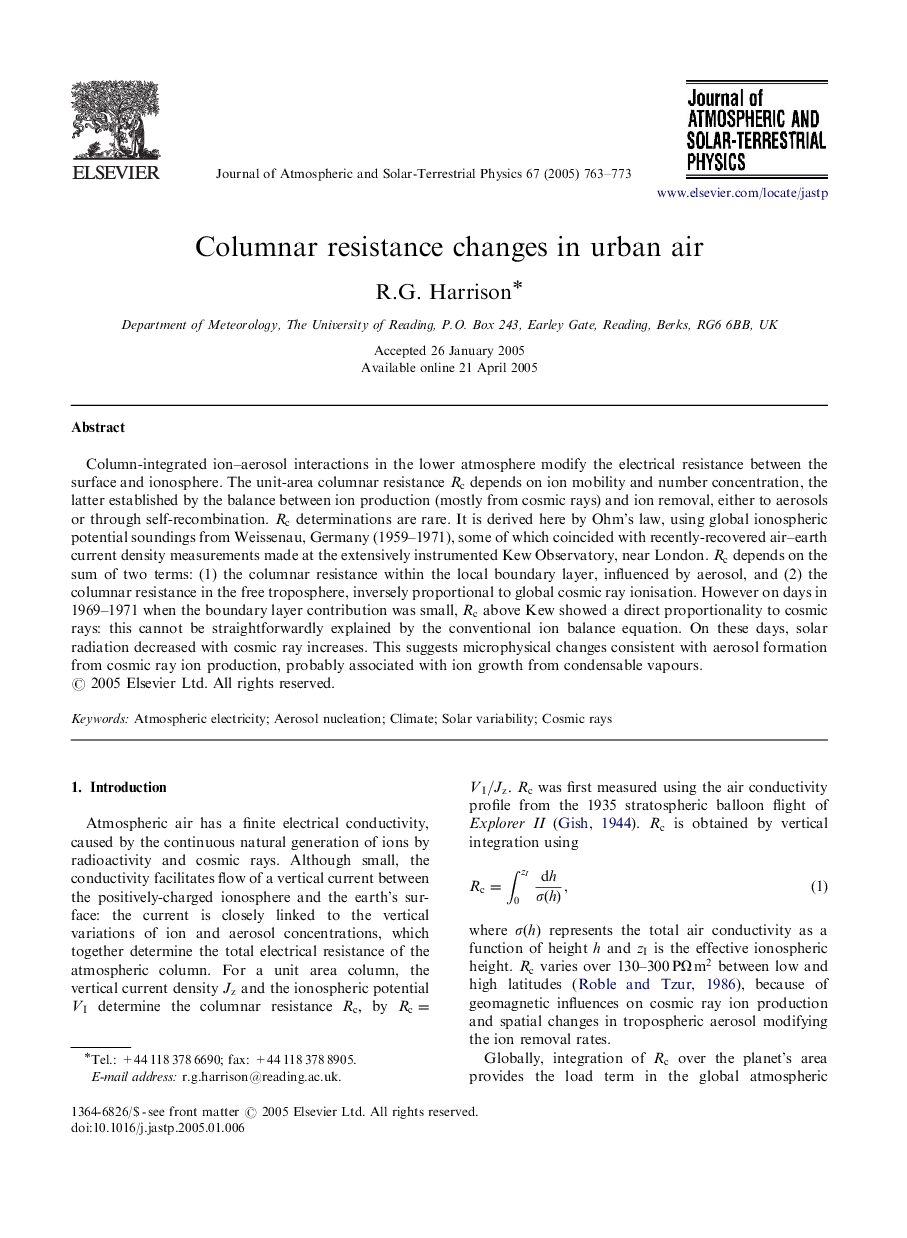| Article ID | Journal | Published Year | Pages | File Type |
|---|---|---|---|---|
| 9827700 | Journal of Atmospheric and Solar-Terrestrial Physics | 2005 | 11 Pages |
Abstract
Column-integrated ion-aerosol interactions in the lower atmosphere modify the electrical resistance between the surface and ionosphere. The unit-area columnar resistance Rc depends on ion mobility and number concentration, the latter established by the balance between ion production (mostly from cosmic rays) and ion removal, either to aerosols or through self-recombination. Rc determinations are rare. It is derived here by Ohm's law, using global ionospheric potential soundings from Weissenau, Germany (1959-1971), some of which coincided with recently-recovered air-earth current density measurements made at the extensively instrumented Kew Observatory, near London. Rc depends on the sum of two terms: (1) the columnar resistance within the local boundary layer, influenced by aerosol, and (2) the columnar resistance in the free troposphere, inversely proportional to global cosmic ray ionisation. However on days in 1969-1971 when the boundary layer contribution was small, Rc above Kew showed a direct proportionality to cosmic rays: this cannot be straightforwardly explained by the conventional ion balance equation. On these days, solar radiation decreased with cosmic ray increases. This suggests microphysical changes consistent with aerosol formation from cosmic ray ion production, probably associated with ion growth from condensable vapours.
Related Topics
Physical Sciences and Engineering
Earth and Planetary Sciences
Geophysics
Authors
R.G. Harrison,
